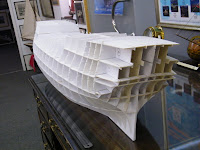




Hasegawa kit
1:48
The Douglas A-4 Skyhawk is a carrier-capable ground-attack aircraft designed for the United States Navy and U.S. Marine Corps. The delta winged, single turbojet-engined Skyhawk was designed and produced by Douglas Aircraft Company, and later McDonnell Douglas. It was originally designated the A4D under the US Navy's pre-1962 designation system.
Fifty years after the aircraft's first flight, and having played key roles in the Vietnam War, the Falklands War, and the Yom Kippur War, a few of the nearly 3,000 Skyhawks produced remain in service with several air arms around the world, including active duty on the aircraft carrier of the Brazilian Navy.
A-4F: Refinement of A-4E with extra avionics housed in a hump on the fuselage spine (this feature later retrofitted to A-4Es and some A-4Cs) and more powerful J52-P-8A engine with 9,300 lbf (41 kN) thrust, later upgraded in service to J52-P-408 with 11,200 lbf (50 kN), 147 built. Some served with Blue Angels acrobatic team from 1973 to 1986.
Text: Wikipedia http://en.wikipedia.org/wiki/A-4_Skyhawk





















































